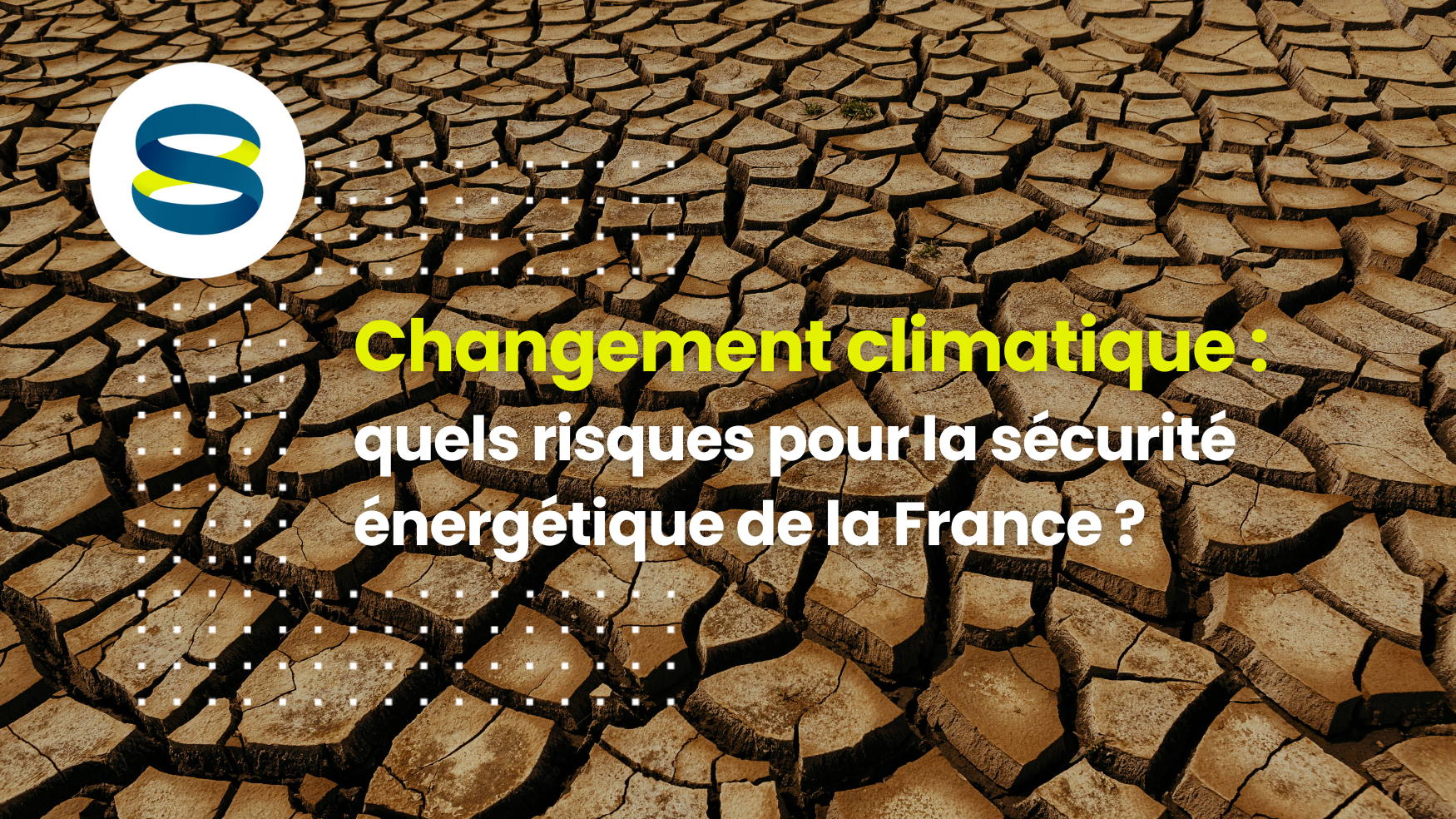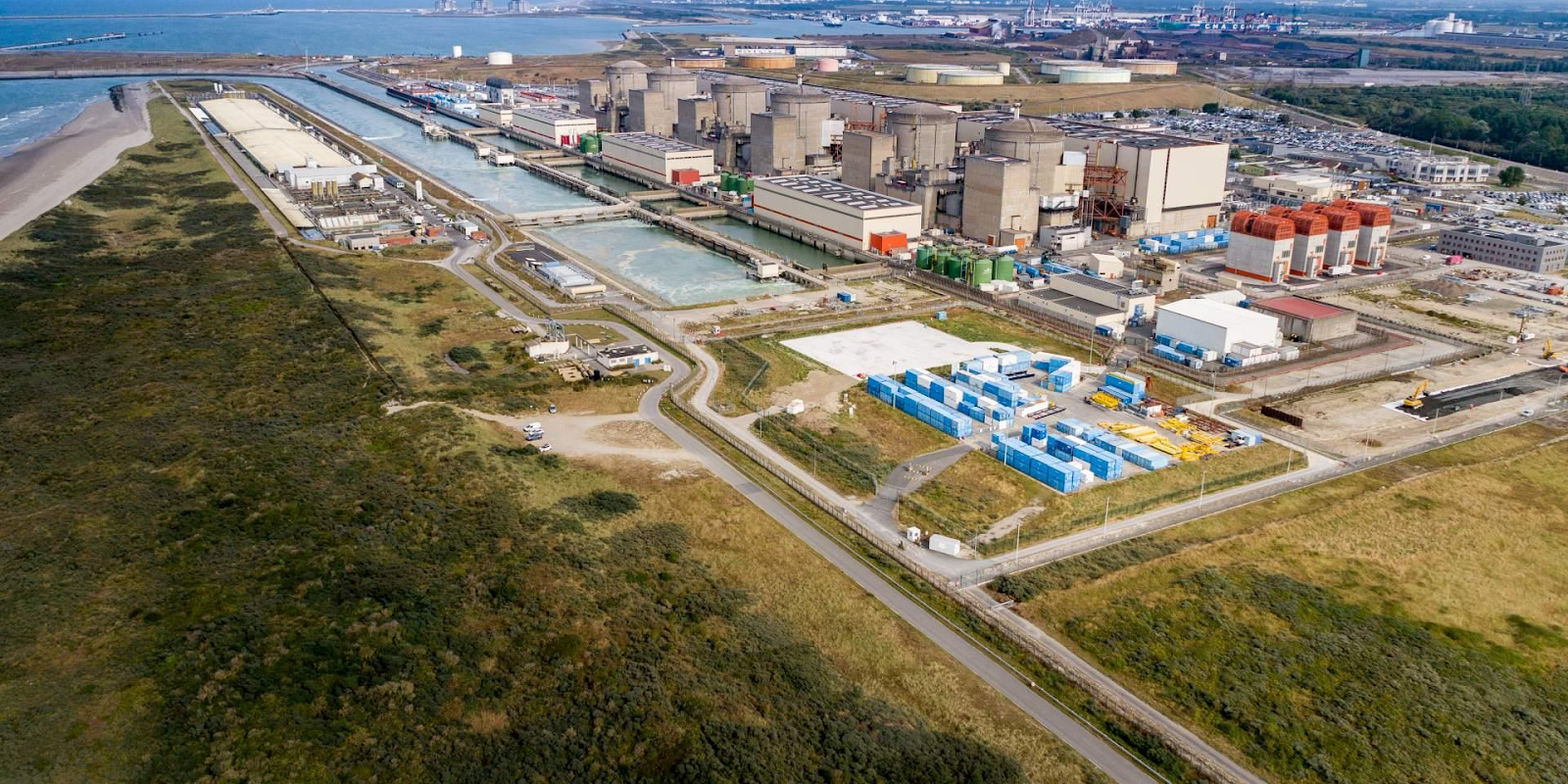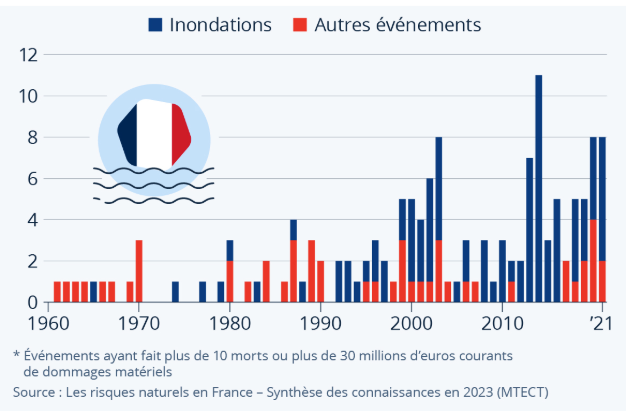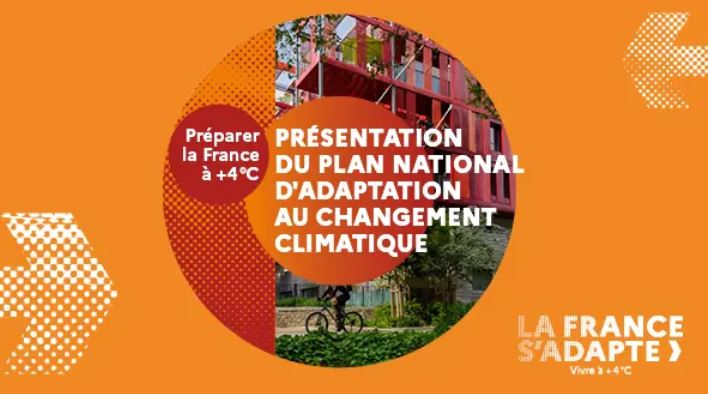

August 27, 2025
7
Min reading

Stranded jellyfish paralyzing production at the Gravelines nuclear power plant: behind this unusual image of summer 2025 lies a very real alert.
Although all four reactors have now restarted, this rare event demonstrates the vulnerability of our energy infrastructures to the effects of climate change.
Unprecedented floods in Hauts-de-France in 2023, record fires in 2025, exceptional heatwaves: for several years, France has been painfully experiencing the human, natural and material consequences of global warming.
How do these natural phenomena, which are becoming more frequent and intense, upset electricity infrastructures and networks?
Faced with the threats to France's energy security, is it still possible to act?
Between vulnerability and resilience, Sirenergies draws a portrait of an energy system under stress.
For several years, France has been suffering the full brunt of the consequences of climate change. The warming highlights the fragility of its energy system, in particular nuclear and hydroelectricity, two pillars of its electricity production strategy.
Since 1993, the temperature of the oceans has risen by 0.6°C and that of the Mediterranean Sea by 1°C. If this warming of the waters disrupts marine biodiversity, some organisms take advantage of it. This is the case of jellyfish whose numbers are exploding. Rising temperatures, combined with pollution and overfishing, eliminate their natural predators and promote the development of plankton, their main food source.
It is this ecological imbalance that caused the major incident of this summer 2025 at the Gravelines nuclear power plant. Driven by unpredictable currents, masses of jellyfish obstructed the filter drums seawater pumping stations, requiring the immediate shutdown of the four reactors. This rare phenomenon has already been observed in the past — but on a smaller scale, in Gravelines, but also in Scotland, Sweden or Japan.

While this phenomenon is not new, its intensity highlights the climate vulnerability of energy infrastructures. This incident also highlights the urgency of adapting systems in the face of incidents that could worsen.
The heatwave and the drought which accompanies it also threaten the balance of the French energy system.
Two phenomena are combined. On the one hand, Rising temperatures are directly affecting electricity production. Warming rivers and falling water levels are forcing nuclear and hydroelectric power plants to be slowed down, or even stopped, in order to meet environmental standards and protect ecosystems.
On the other side, The massive use of air conditioning is causing electricity demand to explode. These peaks in consumption exacerbate supply pressures and can cause market prices to rise.
This phenomenon could intensify with the frequency and severity of heatwaves, making the balance between production and consumption that is difficult to maintain.
With climate change, torrential rains, “lightning” floods, violent winds and devastating fires are gaining in frequency and intensity.
In 2025, the number of hectares burned in France already exceeded all records, with a figure 3.5 times higher than the average of previous years.
These unpredictable natural disasters ravage everything in their path, including energy transport and distribution infrastructures.
In 2021, violent fires deprived 100,000 consumers of electricity, due to the de-energization of the power line connecting Perpignan to Narbonne.
Tens of thousands of homes were also plunged into the dark during the exceptional floods of 2023 in Hauts-de-France. At the seaside, nuclear reactors are also exposed to an increased risk of marine submersion, compounded by rising sea levels.

Recent climate events highlight the worrying fragility of the French energy system. Between falling production, dependence on imports and geopolitical tensions, the situation raises legitimate questions about the resilience of the system and national energy security.
Climate change is posing unprecedented challenges to electrical infrastructures. From production infrastructures to distribution networks, each link in the energy chain is increasingly exposed to climate hazards.
Networks are particularly suffering heat, storms, and fires. Tree falls on the lines, heating of electrical cables, line breaks, overheating of current and voltage measurement devices or the submersion of transformer stations are all threats to the supply of electricity to the French.
The drop in electricity production, caused by climate events, is forcing France to turn to the outside world. Ce Recourse to imports Raise questions about national energy sovereignty. It also increases the reliance from France to fossil and polluting fuels, produced by countries with an unstable regime, authoritarian or at geopolitical risk.
The example of oil and gas is obvious. In recent years, tensions in the Middle East, economic sanctions or internal crises in some states have had a direct impact on the prices and availability of energy resources. The vagaries of the weather as well. In 2005, Hurricane Katrina abruptly interrupted offshore oil extraction.
This dependence makes France more vulnerable, in a context where energy resources are sometimes used as levers of power.
Despite the climatic shocks, France is not yet threatened by Black Out. The country has a good resilience capacity to adapt its energy system to climate change. But action must be taken now.
Faced with the intensification of climate hazards, network managers Enedis and RTE accelerate their adaptation and modernization efforts.
From 2001 to 2016, RTE conducted a extensive security program to protect 50% of its network against the risk of flooding. In the same vein, the 10-year network development plan (SDDR) published in 2025, foresees an investment of 20 billion euros by 2040 to adapt 80% of the network to climate change. On the distribution side, Enedis has been deploying its Climate hazard plan. More than 24 billion euros in investments are planned by 2040 to replace the most sensitive networks, primarily underground cables made of impregnated paper (CPI).
The other sectors also include climate risk. In the nuclear sector,Nuclear Safety Authority (ASN) takes into account the impact of climate change on reactors in its fifth periodic review. For hydroelectricity, experiments are underway in the Adour-Garonne and Loire-Bretagne basins to adapt structures to falling flows.
Diversifying energy sources is essential to limit the risks of electricity shortages and to stabilize the system in the event of a crisis. Renewable energies are the key to reduce dependence on fossil fuels and strengthen climate resilience.
Even if it loses 0.5% of efficiency above 25° C., the photovoltaics remains a robust energy solution during a heatwave or in the face of drought, floods and violent winds.
Drawing its energy from the basement, The geothermal energy is also less exposed to the effects of climate. La biomass also represents a more stable energy option.
Photovoltaic self-consumption is another lever for strengthening energy resilience. By limiting dependence on the electricity and gas network, it guarantees access to local electricity, even in the event of hot weather or network failures. By regulating demand, it also contributes to reducing tensions on the network.
At the same time, the development of energy storage technologies, such as batteries or Power-to-Gas, is essential. The storing helps to compensate for temporary decreases in production linked to extreme climate events, by injecting the energy stored upstream into the network. It thus limits the risk of cuts and guarantees a stable supply during crises.
Did you know that?
Sirenergies supports you in your energy transition projects : solar self-consumption, green energy contracts...).
For Achieve your goals While optimizing your energy costs :
For businesses, anticipating climate change has become strategic, regardless of their size and activities.
It is a It's a question of long-term survival.
Depending on its location and characteristics, each company is strongly encouraged to assess its climate risks. This audit allows to anticipate and plan adapted and accessible solutions, without the stress of the crisis.
Photovoltaic self-consumption, renewable energies, reinforced security systems make the company more resilient.

With the Third national climate change adaptation plan (PNACC) published in March 2025, this vulnerability study becomes an obligation for transport and energy companies, before being extended later to the most vulnerable sectors.
The objective? Precisely map risks in order to better plan adaptation measures and strengthen the resilience of infrastructures.
Did you know that?
Businesses, communities, artisans : you have the means to act at your level to adapt your business to climate change and protect its long-term sustainability.
An energy consulting and sourcing firm, SirEnergies builds with you a tailor-made energy strategy, integrating climatic hazards.
Make an appointment with a SirEnergies expert
To conclude...
Jellyfish that block a nuclear power plant, fires that cut power lines, dry rivers that stop hydraulic production: these events are no longer fictional or exceptional. These are the visible symptoms of an energy system under pressure from climate change.
But while the threat is real, France still has the capacity to act to anticipate and adapt. The projects are already under way. Today, it is time to accelerate in order to protect France's energy security. The race against climate change has begun. Every action counts. France has the means to do so. Businesses too.



.png)

For companies and communities that wish to anticipate ESG obligations, reduce their carbon footprint and structure a climate strategy.
.png)

It provides definitions, guides and analyses to decode key concepts (e.g. TICFE, PDL, spot market).